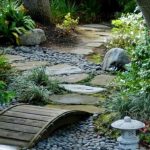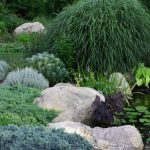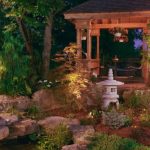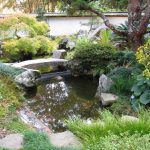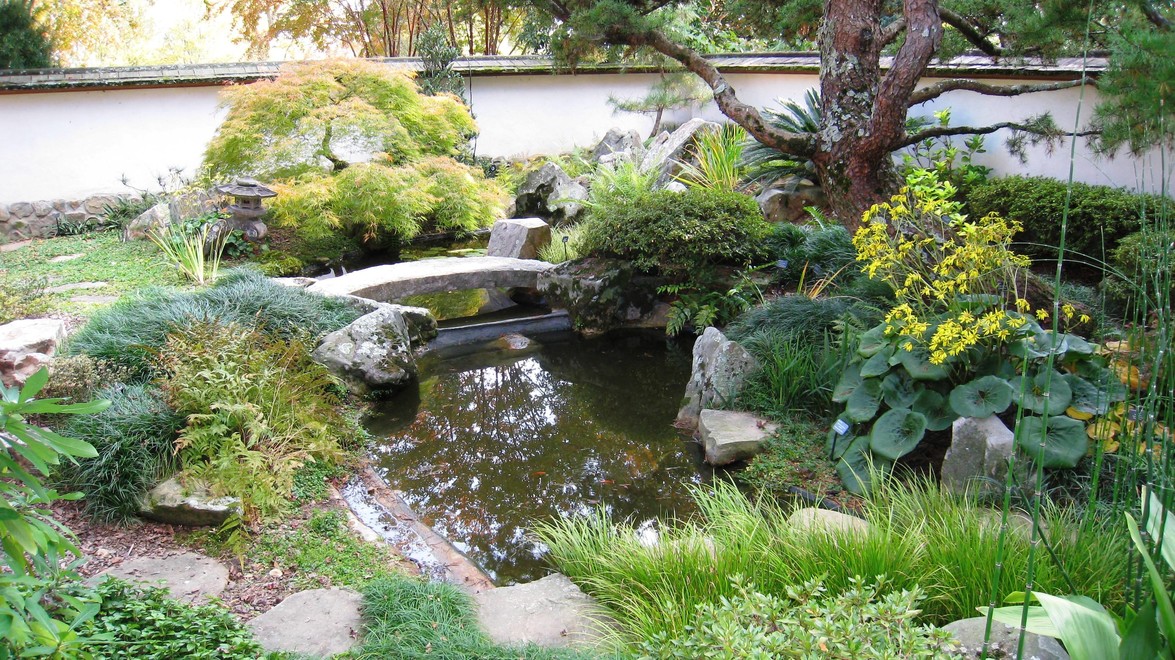
Japanese style gardens use features such as ponds, streams, bridges, hills and islands to create miniature reproductions of natural scenery. Tranquility is the general feel of a true Japanese garden.
### Water Features:
Typically, garden ponds are the central element to most Japanese style gardens. Often times they are filled with koi fish to add colour and life to the garden. In dry gardens, water is represented by raked gravel, sand and stones.
### Pathways:
Japanese gardens encourage movement by having flowing pathways through vegetation. Natural stone stepping stones are surrounded by lush ground cover such as moss to soften harsh lines. Narrow paths lead to water features and secluded areas and for reading, relaxation and meditation.
### Lanterns:
These gardens always feature traditional lanterns which can be found in a variety of shapes and sizes. They have been a common element in traditional Japanese gardens throughout history. Typically made of stone, these lanterns are carefully placed in select locations such as near water features or within plantings near pathways. Lanterns are often paired with water basins which together make up the basic elements of a Japanese tea garden.
### Plantings:
In traditional Japanese gardens, plants are chosen for their symbolism. Evergreens represent longevity and should be present but small, like a dwarf mugo pine. Bamboo is also a must have as is represents longevity and happiness. The classic Japanese Maple is chosen to add colour in summer and fall months and as a reminder of the change in seasons and in life. Colour in Japanese gardens is fleeting, not permanent, to remind us of the brief nature of life and to encourage self-reflection.
Do you have a Japanese garden? Please share your photos on our [Facebook](https://www.facebook.com/GeldermanLandscapeServices) page..
*Post contributed by Chelsea Mills, Jr. Landscape Designer*
Need inspiration for your garden? Visit our [garden services](https://gelderman.com/residential/gardens) page.

